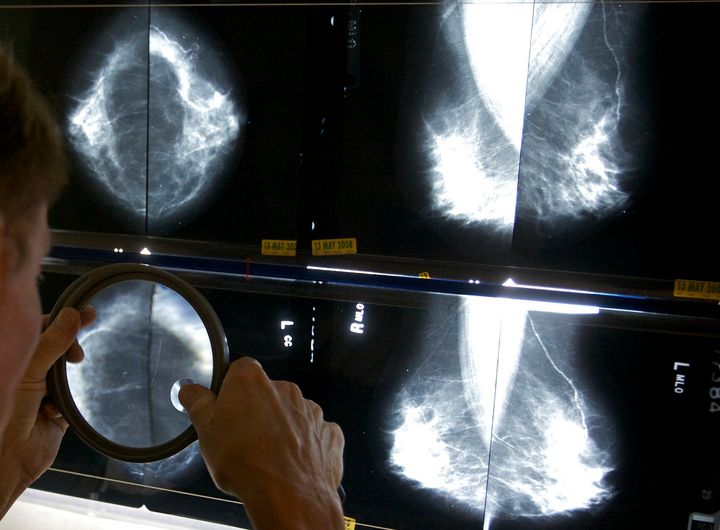
About 55,000 women and 400 men are diagnosed with breast cancer every year in the UK, research and support charity Breast Cancer Now writes.
That’s mostly women, with one of us getting diagnosed with the condition every ten minutes.
Despite that, they say, “Over half of UK women do not check their breasts regularly for potential signs of breast cancer.”
In a recent TikTok, doctor Karan Rajan ― who’s known for sharing his medical knowledge on the app ― explained some complications that can arise while getting a mammogram (a breast examination used to find possible lumps in the breast tissue).
Though he stressed that you should get a mammogram if you’re eligible as they’re overall very effective, he suggests taking other steps ― including completing a risk test ― too.
Why?
Some women, especially younger women, have “dense” breast tissue.
That shows up as white on the mammogram, Dr. Rajan explains, which unfortunately makes lumps (which also tend to come up white on the scan) harder to spot.
“Even if you do have dense breasts and you’re invited for a breast cancer screening mammogram, you should probably still have it,” he says.
“But it’s also important to do regular self-examination so you know what’s normal for you, and be aware of your personal breast cancer risk, which could help to identify if any additional screening tools are needed, like ultrasounds or MRIs.”
The doctor recommends a risk assessment tool called the Tyrer-Cuzick Risk Assessment Calculator, which we’re linking to here.
Though it’s not a diagnostic tool, it only takes minutes and will keep you “better informed,” Dr. Rajan explained.
How do I do self-examinations?
The NHS says we should check our breasts around once a month to look out for signs of new and unusual growth.
They say we can check our breasts by following these steps:
- Look at your breasts or chest in a mirror to look for any changes. Start with your arms by your sides and then raise them.
- Feel around each breast or side of your chest in a circular motion all the way up to your collarbone and under each armpit. Use a mix of light and firmer pressure. Do not press so hard it hurts.
- Feel around and over each nipple.
We should be on the lookout for a lump or swelling in our breast, chest, or armpit, dimpling, redness, “orange peel” skin, or other skin changes, a change in size or shape for one or both breasts, nipple discharge when you’re not lactating, a change in the shape or appearance of your nipple, and sores or ulcers.
See a GP if you have any changes or lumps, or are experiencing a pain in your breast or armpit that doesn’t go away.